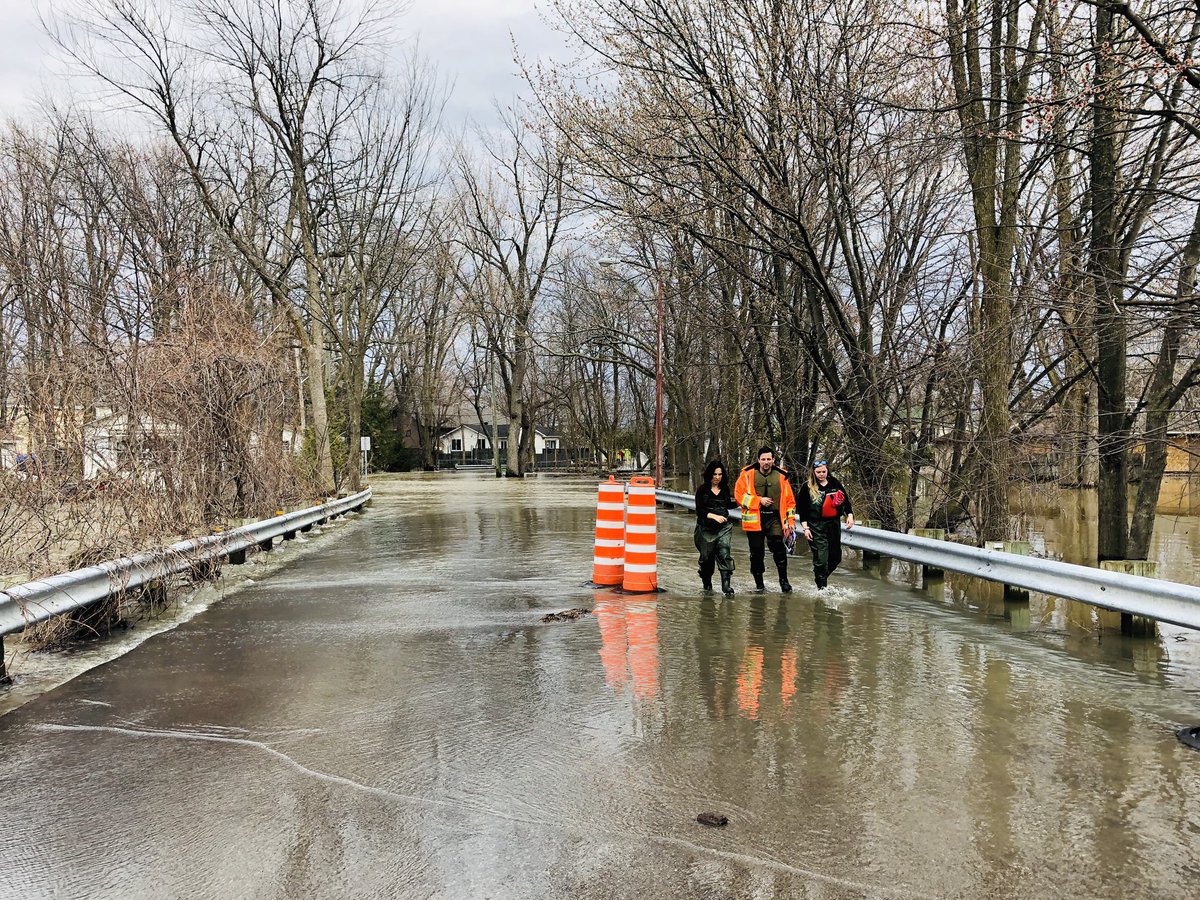
MONTREAL – As a steady rain moved into Quebec Friday, Montreal declared a state of emergency and authorities closely monitored a dam and a dike that were placing residents at risk to the west of the city.
Provincial police were patrolling an area of homes and cottages along the Rouge River, about 140 kilometres west of Montreal, where 75 people were forced out when a hydro dam was declared to be at risk of failing.
Meanwhile, Canadian Forces soldiers were dispatched to reinforce a dike in Pointe-Calumet – northwest of Montreal by the Lake of Two Mountains – that was threatening to give way and force 1,000 people from their homes.
Montreal Mayor Valerie Plante said the situation in Quebec’s largest city is under control, but added the heavy rain in the forecast could change conditions rapidly. She said the emergency declaration gives Montreal’s fire chief the authority to force evacuations and spend money without requiring city council’s approval.
About 100 kilometres northeast of Montreal, hectares of farmland were flooded between the shores of the St. Lawrence River and the Felix-Leclerc Highway.
Near the town of Yamachiche, the water has risen to completely surround France Bellemare’s home. “You should come here in the summer – it’s paradise,” she said, as she climbed into a canoe by the side of her house.
About a week ago, there was a roughly five-metre drop to the lake behind a stone wall at the edge of her property, she said. But as of Friday afternoon, only a few centimetres of stone could be seen jutting above the waves.
Holding a paddle in her hands, Bellemare said she still hasn’t been fully compensated by the government for the floods of 2017. She knows her home is in a flood zone, but she doesn’t want to leave.
Authorities, she said, should let her and her neighbours build a higher wall to better shield their homes. But she said they aren’t allowed. “This wall was built 20 years ago,” she said. “Technology has progressed, yet we can’t touch anything. They should give us the flexibility to build a new structure.”
Next door, Christian Montigny and his wife, Ginette, were sitting in their living room overlooking the lake. A massive tree trunk was floating beside their porch, which normally would have been several metres above the water.
Montigny said despite the frequent floods, they love living near the lake. Montigny smiled when asked if he was prepared to take money from the provincial government to relocate. “We’re not going anywhere,” he said.
West of Montreal in Grenville-sur-la-Rouge, provincial police Sgt. Marc Tessier said evacuees left voluntarily after public security officials issued an alert Thursday afternoon warning that the Chute Bell dam was at risk.
Some in more remote areas had to be airlifted by helicopter, and police planned to remain in the area to ensure no one returned. “Our message is, if you’re in the zone, we’re going to ask you to leave,” Tessier said. “We don’t have a time frame for when they’ll (be able to) go back.”
The evacuated area stretches about 18 kilometres south to the Ottawa River in Quebec’s Lower Laurentians region. The alert is in effect until May 3.
The infrastructure was intended to withstand what officials call a millennial flood – an occurrence expected once in a thousand years. Francis Labbe, a Hydro-Quebec spokesman, said those levels have been reached, and with rain in the forecast, the Rouge River will likely rise.
“Right now everything is stable, it’s under control,” Labbe said Friday. “The problem is the rain that we are expecting in the next 24 hours or so, and we know this rain will make the flow of the river rise 30 per cent more than what it is right now.”
Eric Moisan, another utility spokesman, acknowledged that once the river flow surpasses the current 980 cubic metres per second, “we don’t know how the power station will perform.” He noted that a dam does not necessarily give way when the flow is excessive.
“It’s concrete. It’s very solid,” he said.
Public Security Minister Genevieve Guilbault said heavy rain – particularly in the northern Outaouais and north of Quebec City – will cause water levels to the south to rise, and people living near bodies of water at risk need to be prepared.
As of 1 p.m. Friday, Quebec’s Public Security Department said 3,148 residences had been flooded in the province, 2,362 residences had been cut off due to rising waters and 1,110 people had been forced from their homes.
In Gatineau, Mayor Maxime Pedneaud-Jobin warned residents Friday to prepare for the worst. “By Monday or Tuesday, we should exceed the highest levels of 2017,” he said, adding it could stay that way for up to two weeks. “What we will live through in the coming weeks, we’ve never experienced.”